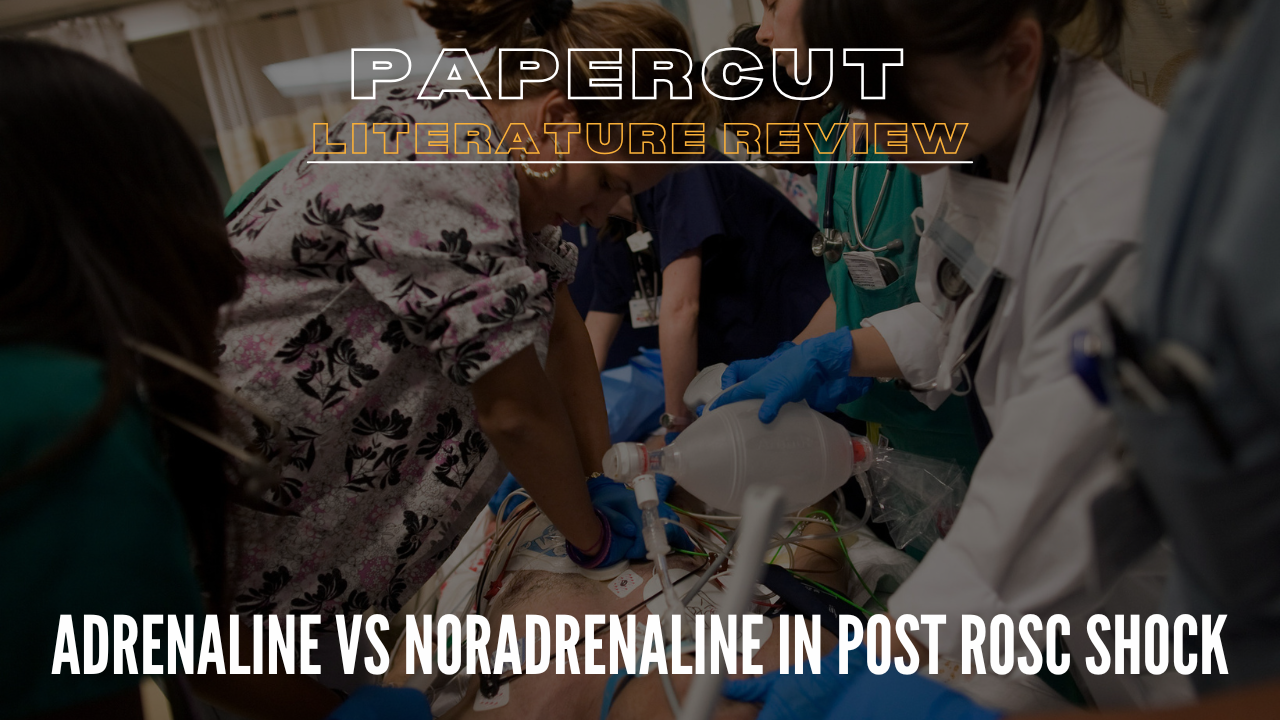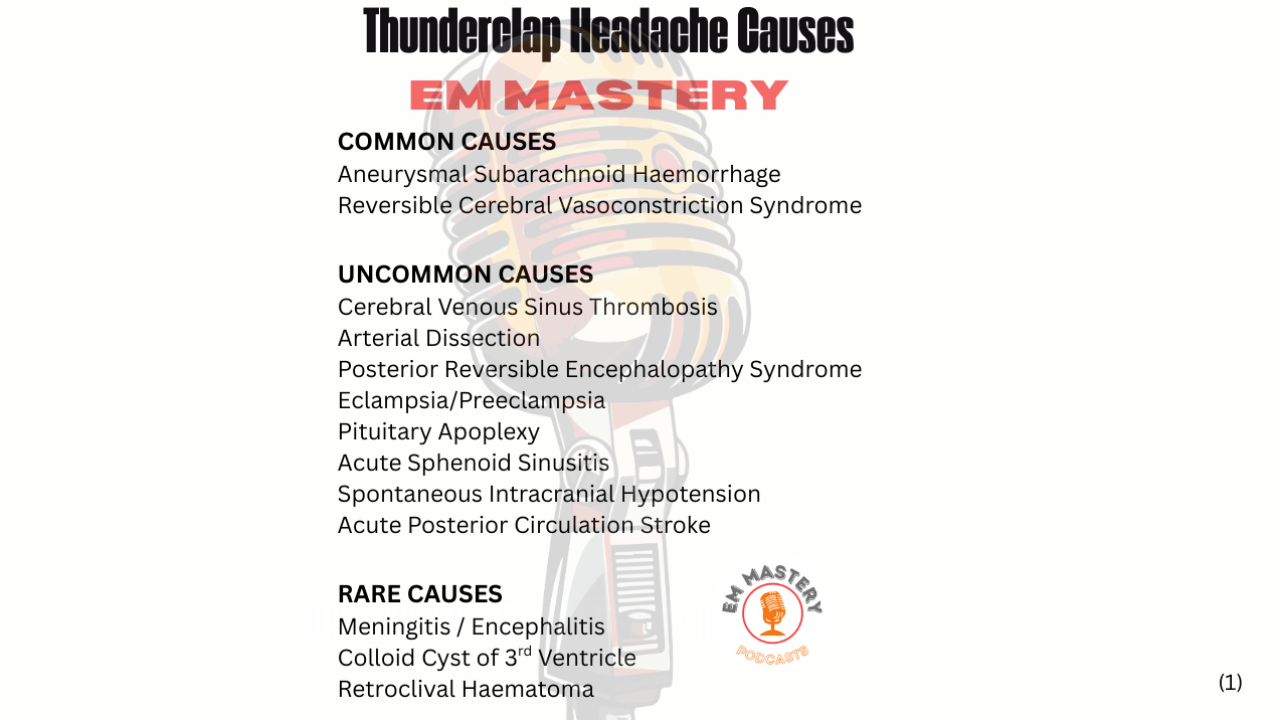
Papercut: I/O vs IV Access in OHCA
Nov 07, 2024This study looked at the use of intraosseous (I/O) versus intravenous (IV) routes for drug administration in out-of-hospital cardiac arrest (OHCA).
Advanced Life support guidelines require the administration of medications to assist in return of spontaneous circulation (ROSC); adrenaline in patients with a non-shockable rhythm and the addition of amiodarone in those with refractory ventricular arrhythmias.
A systematic review of observational studies showed worst outcomes in patients receiving medications via the I/O, rather than the IV route(1). There have also been issues related to flow rates and reduced effect of drug doses given by the I/O route. The American Heart Association and the European Resuscitation Council recommend IV access as a first choice, which if unsuccessful, can be followed by I/O access (2,3)
In September's Papercut, we reviewed a single centre study, that looked at IM adrenaline and how it compared to IV adrenaline. (Read it here)
Spoiler Alert: In that study they found that patients receiving IM adrenaline:
- had a better survival to hospital admission (37.1% vs 31.6% OR 1.37)
- had a better survival to hospital discharge (11% vs 7% OR 1.73)
- had a better functional survival (9.8% vs 6.2% OR 1.72)
The Study
Vallentin M.F. et al. Itraosseous or Intravenous Vascular Access for Out-of-Hospital Cardiac Arrest. NEJM Published October 31, 2024 DOI: 10.1056/NEJMoa2407616
What They Did
"The objective of the trial was to determine whether the effectiveness of initial attempts at intraosseous vascular access or intravenous vascular access during out-of-hospital cardiac arrest would differ with respect to the return of spontaneous circulation."
This was a randomized, parallel-group superiority trial conducted in Denmark.
Inclusion Criteria
- >18 years of age plus vascular access was indicated
- Cardiac arrests were generally attended by a primary ambulance and a physician-manned unit, where the physician may terminate the resuscitation.
Exclusion Criteria
- Suspected traumatic cause of cardiac arrest
- Vascular access already in place at the time of possible randomization
- Previous enrollment in the trial.
N=1506
Randomisation
Randomisation was blinded and was performed by the onsite physician in a 1:1 ratio.
- Intraosseous group (n=746)
- This group was further randomised, for secondary comparison, in a 1:1 ratio to humeral or tibial locations.
- Intravenous group (n=760)
Following two failed attempts (an attempt was defined as skin penetration), the method used for further attempts was determined by the clinician. Some of the patients with I/O intraosseous access underwent computed tomography (CT) of the access area if CT was already clinically indicated.
Patients who regained capacity were approached for written consent. For those that were incapacitated, written informed consent was obtained from a close relative and a physician who was not involved in the trial.
Primary Outcome
Sustained ROSC, defined as palpable pulse or output with no requirement for chest compressions for 20 minutes.
Secondary outcomes
- Survival at 30 days
- Survival at 30 days with favorable neurologic outcome (also at 90 days, 180 days and 1 year)
- Score of 0 to 3 on the modified Rankin scale
- Health-related quality of life at 30 days (also at 90 days, 180 days and 1 year)
- EuroQol Group 5-Dimension 5-Level questionnaire (EQ-5D-5L) Scores of 0 to 100, higher scores indicate a better health-related quality of life.
What They Found
Incidence of successful first or second attempt in all patients in the study was:
- 92% in the intraosseous-access group and
- 80% in the intravenous-access group.
However 44 patients (6%) in the I/O group and 25 patients (3%) in the IV did not have any attempt at vascular access, due to early termination of resuscitation. 16 patients (2%) in the I/O group and 64 patients (9%) in the IV group underwent attempts that were discordant with the trial-group assignment.
This means that in patients who had vascular attempts according to trial group assignment, the success rates were:
- 92% on first attempt and 98% in first or second attempts in the I/O group and
- 66% on first attempt and 81% in the first or second attempts in the IV group
Despite the differences in success rates the median times to adrenaline administration were the same in both groups (15 minutes)
Both groups were similar for:
- Time to first attempt success,
- Median time to the first dose of epinephrine
- Location of cardiac arrest ie., home or public area
- Rate of bystander CPR (52%)
- Initial rhythms
Primary Outcome Result:
Sustained ROSC was similar in both groups
- 221 patients (30%) in the I/O group and
- 214 patients (29%) in the IV group,
Secondary Outcome Results:
At 30 days, survival was:
- 85 patients (12%) in the I/O group and
- 75 patients (10%) in the IV group
Patients surviving 30 days with a favorable neurologic outcome were:
- 67 in the I/O group and
- 59 in the IV group
Patinets surviving 90 days with a favourable neurological outcome were:
- 82 patients (11%) in the I/O group and
- 71 patients (10%) in the IV group
Adverse events
Prespecified adverse events were found to be uncommon and were limited to extravasation, bradyarhythmias and ventricular arrhythmias.
Secondary Analysis of humeral vs tibila I/O
Of a total of 731 patients in the I/O group:
- 361 were randomly assigned to humeral access and
- 90% ssucces in vascular access in up to two attempts was obtained.
- There was a 5% incidence of displacement
- Sustained ROSC occurred in 108 patients (30%) in this group
- 370 to tibial access.
- 93% success was obtain in up to two attempts.
- There was a1% incidence of displacement.
- Sustained ROSC occurred in 113 patients (31%) in this group.
My Take on This
The trial was powered to look at sustained ROSC, not 30 days survivals, or a comparison of I/O vs IV administration, so we cannot take those results away with us. ROSC sustained for 20 minutes is not the marker I'm interested in. I'm interested in intact patients at hospital discharge. The only time that short term ROSC, with a refractory arrhythmia is of use to me is if the patient is going to an ECMO centre.
This is an important study for prehospital providers. A similar trial came out in the same issue of the NEJM. Go over and have a look at the PARAMEDIC-3 Trial as well. In this trial they used a primary outcome of 30 day survival.
References
- Granfeldt A, et al. Intravenous vs. intraosseous administra- tion of drugs during cardiac arrest: a sys- tematic review. Resuscitation 2020;149: 150-7.
- Panchal AR, et al. Part 3: Adult basic and advanced life support: 2020 American Heart Association guidelines for cardiopulmonary resuscitation and emergency cardiovascular care. Circulation 2020;142:Suppl 2:S366-S468.
-
Soar J, et al. European Resuscitation Council Guidelines 2021: adult advanced life support. Resuscita- tion 2021;161:115-51.
Join Our Free email updates
Get breaking news articles right in your inbox. Never miss a new article.
We hate SPAM. We will never sell your information, for any reason.













